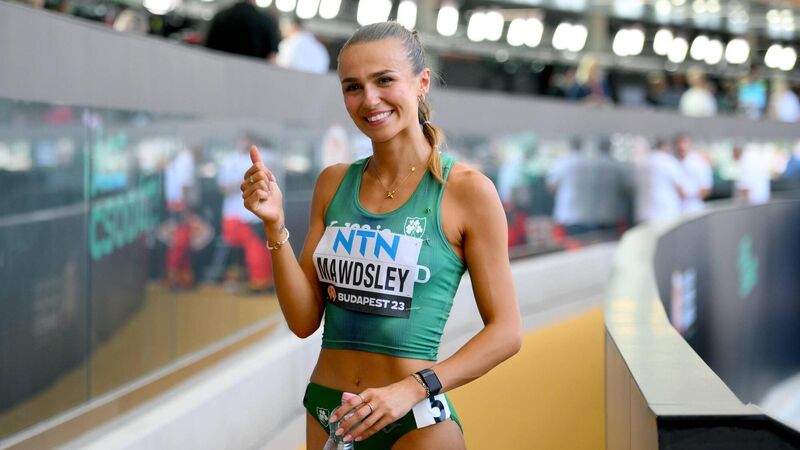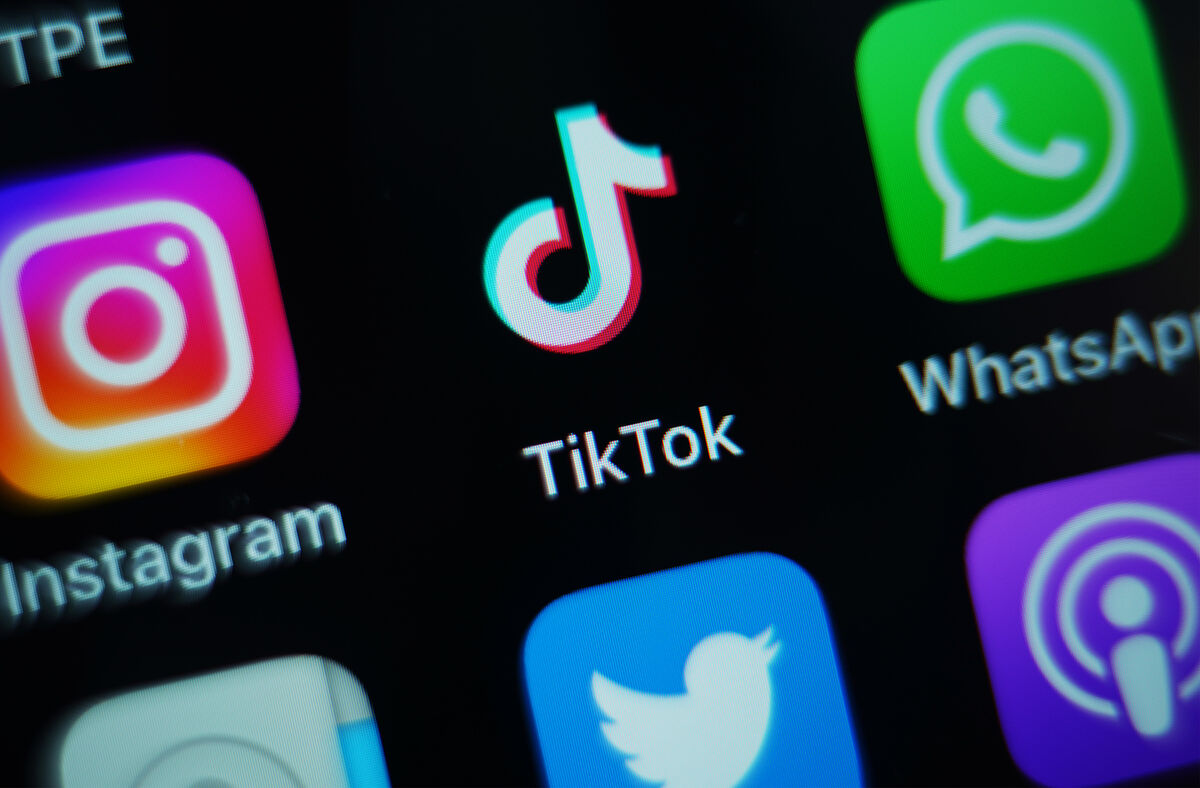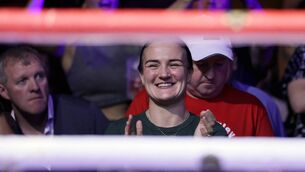TikTok yes, Twitter no, and keep mute button close to hand - Irish athletes' social media advice

LIKE AND FOLLOW: 'I stick to Instagram. I have Twitter deleted off my phone,' says Irish athlete Sharlene Mawdsley. Pic: Sam Barnes/Sportsfile
“I am grateful for the platform. I am grateful to be able to reach people. But I don’t want it, like when I tell you I don’t want fame, I don’t want any of that. It’s toxic. It genuinely, physically makes me sick. When I got back on social media, for three or four weeks before the trials, I started getting anxiety because you’re looking at what everybody else is doing, what everybody else is posting, how many followers they have, and it physically makes you sick.”
–
Rhasidat Adeleke has a tactic. When it comes to social media use at major championships, the 20-year-old Dubliner views Twitter as something of a threat, but TikTok as her best friend.
“I feel like Twitter is probably the worst place to be as an athlete before you compete because you could be scrolling and you'll see a picture of you and your rival and someone saying, 'I can't wait for this race,’” she says. “You look at the comments and people are saying, 'I've got Britton (Wilson)’ Everyone is entitled to their opinion (but) at the end of the day, you just have to go on the track and remove all those external thoughts.”
No matter how she runs, Adeleke knows that, these days, a deluge of reaction awaits once she picks up her phone. And so, on big-pressure weeks like this, she takes refuge in TikTok, where she’s tailored the algorithm to a specific purpose. “I stopped liking anything track-related so it's just funny videos, fashion and beauty,” she says. “And absolutely nothing track-related.”
Sarah Lavin chooses a different option: the mute button. The Limerick hurdler has been in European and world indoor finals in recent years and knows the dizzying symphony of notifications when she fares well at such events. “I’d mute Instagram and Twitter but WhatsApp probably will stay on it,” she says. “You get back to your friends and family, because that's normal.”
For Irish athletes at the World Championships in Budapest, that’s the key – finding a sliver of normality in an abnormal situation. For 51 weeks of the year, they live in relative obscurity but on weeks like this, they’re thrust into the national spotlight. To find or keep sponsors, it helps to engage with fans on social media, building their following. But that has its risks.
Chris O’Donnell remembers the deluge of goodwill that flowed his way after the mixed 4x400m relay reached the Olympic final in Tokyo. But with a race still to run the next day, indulging in it didn’t do the team any favours. “We could feel that support coming from home so there’s that good side, but you can also be there, scrolling and scrolling, going down a hole,” he says. “In the last couple of years social media has changed a lot. To put it bluntly, there’s a lot of silly people getting famous so I try to stay off it before a race.”
At the Tokyo Olympics, shortly after smashing the world record in the 400m hurdles, US star Sydney McLaughlin-Levrone revealed she took a social media detox ahead of the Games. “When you have a lot of outside voices coming at you, it can definitely alter what you have going on internally,” she said. “I stayed off social media, stayed in my room, talked to friends and family and stuck to what I knew.”
Sharlene Mawdsley is the most-followed Irish athlete on Instagram, with over 100,000 followers. Her approach this week? “I stick to Instagram. I have Twitter deleted off my phone. There’s a lot of online coaches who like to give their opinion, but that’s the way the sport is – we put ourselves out there and people are going to have opinions. I’ll post something so my followers know how I got on, but I’m not replying to messages in between rounds. Notifications are off on every app.”
Mawdsley knows one negative comment can rise above a sea of positivity. “That’s the one that sets you over the edge. It’s unfortunate that your mind does sometimes fixate on the negative comments, but to be honest, it made me stronger.”
Phil Healy has felt that same brunt. “Instagram, Twitter, it can be a dangerous game of how much you actually look at it and how much you actually engage because you're going to have people who want to keep their name current,” she says. “You have couch supporters and they can see a post or they can see a tweet and they can jump off the back of that without knowing the (context).”
But should athletes put the phone down to protect their performance? It depends.
“One of the big considerations is: what do they do normally, day to day?” says Kate Kirby, Head of Performance Psychology at the Sport Ireland Institute. “If consuming social media content is something they see as a positive distraction, you don’t want to remove it completely. How do you consume it in a way that doesn’t add to your performance anxiety?”
While athletes live in a bubble at championships that’s hard to pierce via traditional media, smartphones have changed the game. According to NBA star Andre Iguodala, the first thing most players do at half-time now is grab their phone and start scrolling. Expecting athletes to cut themselves off for several days is unrealistic. But how to deal with the noise?
“The first thing is making them aware of that risk, the hundreds and thousands of notifications,” says Kirby. “Some will interpret that as really positive, others see it as a huge burden of pressure, a sudden awakening of the amount of attention they’re getting, that it’s in the consciousness of the whole nation.”

Kirby has worked with many Olympians who hand over social media accounts to friends and family during big events, ensuring they can continue to put out content, keeping sponsors happy, while keeping their mind on the job. Many also set up secondary accounts to follow non-sporting topics, allowing themselves to use the apps without adding stress.
“If they’re regular consumers of content, you don’t want to significantly change what they do. If they do eight hours of scrolling a day, and you completely veto it, it leaves a huge gap of time to fill which is often filled with worry or anxiety, which is pretty disastrous, performance-wise.”
Sport Ireland has granted Kirby and her colleagues funding to create an evidence-based strategy around social media use for athletes at the Paris Olympics next year. Though Kirby knows what little research exists very quickly becomes obsolete.
“It was Twitter in London (2012), Instagram in Rio (2016) TikTok for Tokyo (2021). The research isn’t really keeping up with the technology, so it’s quite hard to get ahead of it.”
Louise Shanahan, who’ll race the 800m in Budapest, isn’t one to cut herself off. “Everything in moderation,” she says. “It can definitely be used for good but you do need to keep it under control. It hasn't been too bad for me, but there's definitely comments I've read where I wouldn't like if I was on the receiving end. So think before you post.”
Thomas Barr has operated at the highest level for almost a decade, and this is the first World Championships he’s missed since 2013, owing to a calf injury. On his path to an Olympic final and European medal, he was always one to engage.
“The Irish are great for getting behind their own and if I do put off a post you get a wash of support and I love that,” he says. “The danger is if you get sucked into the social media world is that you’re focusing too much on what other people are doing.”
Lavin knows social media is just one tiny part of the championship experience and she prefers to prioritise real-life interactions.
“I think being true to yourself is the best thing you can possibly be and not changing that because of what might work,” she says. “At what I’m doing, there's no greater gift than being present in every day.”
Her advice on juggling social media use while getting ready for a peak performance, as she's doing in Budapest this week? “You don't have to do anything to an extreme, just be normal,” she says.
“Do what makes you happy.”














